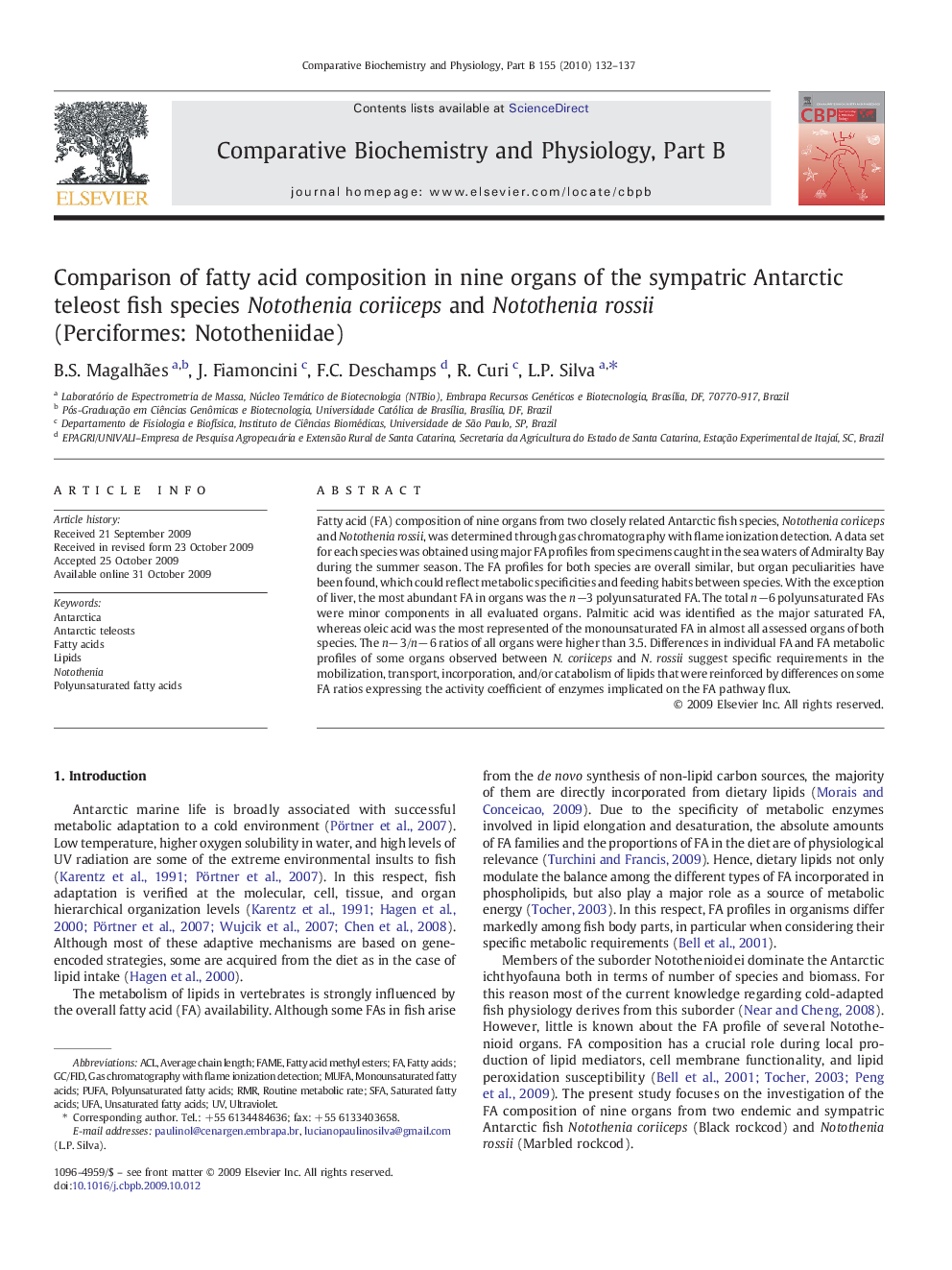| Article ID | Journal | Published Year | Pages | File Type |
|---|---|---|---|---|
| 1975922 | Comparative Biochemistry and Physiology Part B: Biochemistry and Molecular Biology | 2010 | 6 Pages |
Fatty acid (FA) composition of nine organs from two closely related Antarctic fish species, Notothenia coriiceps and Notothenia rossii, was determined through gas chromatography with flame ionization detection. A data set for each species was obtained using major FA profiles from specimens caught in the sea waters of Admiralty Bay during the summer season. The FA profiles for both species are overall similar, but organ peculiarities have been found, which could reflect metabolic specificities and feeding habits between species. With the exception of liver, the most abundant FA in organs was the n−3 polyunsaturated FA. The total n−6 polyunsaturated FAs were minor components in all evaluated organs. Palmitic acid was identified as the major saturated FA, whereas oleic acid was the most represented of the monounsaturated FA in almost all assessed organs of both species. The n− 3/n− 6 ratios of all organs were higher than 3.5. Differences in individual FA and FA metabolic profiles of some organs observed between N. coriiceps and N. rossii suggest specific requirements in the mobilization, transport, incorporation, and/or catabolism of lipids that were reinforced by differences on some FA ratios expressing the activity coefficient of enzymes implicated on the FA pathway flux.
